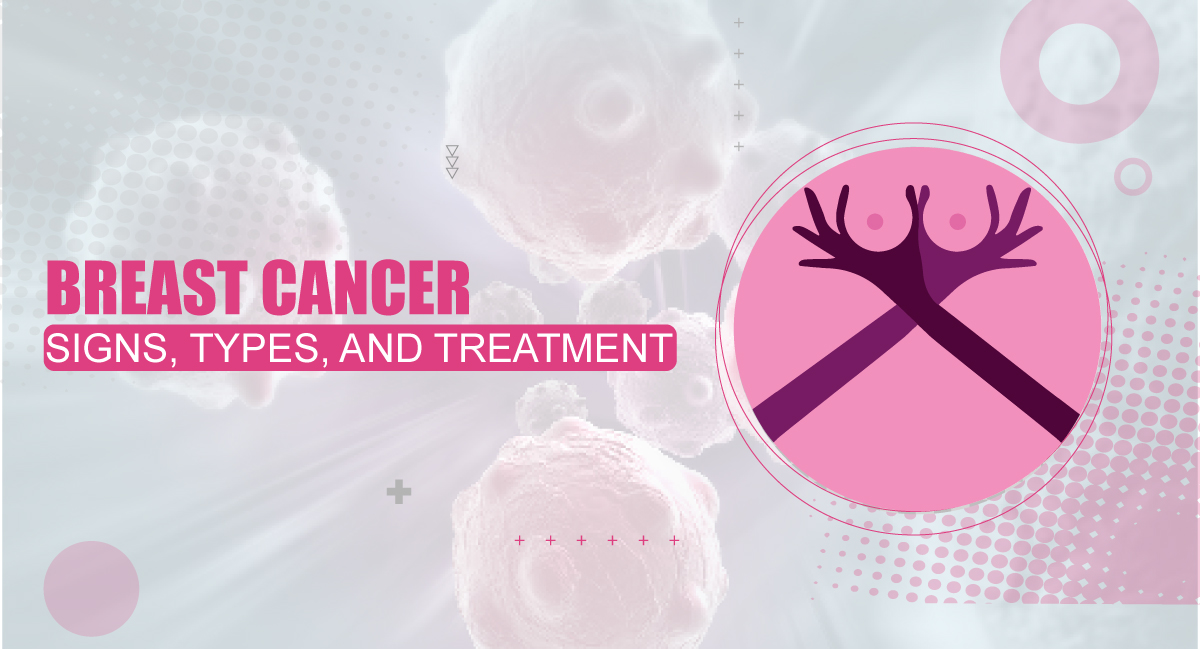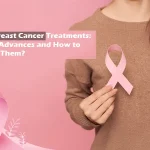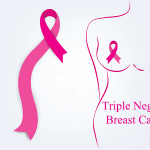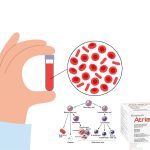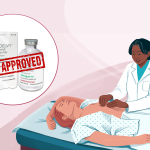Breast cancer remains one of the most prevalent cancers affecting women worldwide, with significant advancements in early detection and treatment. However, understanding the signs, types, and available treatments is crucial for both prevention and timely intervention.
Cancer, in general, occurs when gene mutations cause cells to grow uncontrollably. In breast cancer, these abnormal growths originate in the breast cells and can affect either the lobules (milk-producing glands) or ducts (pathways that carry milk to the nipple). Over time, cancerous cells may invade healthy breast tissue and even spread to the lymph nodes under the arms. Once cancer reaches the lymph nodes, it has a direct route to other parts of the body.
Signs and Symptoms of Breast Cancer:
Breast cancer in its early stages may not show any noticeable symptoms. In some cases, a tumor might be too small to feel but can still be detected via mammogram screenings. However, as cancer progresses, several signs and symptoms may emerge. Here are some common indicators:
- A new lump or thickening in the breast or underarm area.
- Unexplained breast pain.
- Red, discolored, or pitted skin resembling the surface of an orange.
- Swelling in part or all of the breast.
- Nipple discharge that is not breast milk, especially if it is bloody.
- Changes to the nipple, such as inversion or peeling of the skin.
- Sudden changes in breast size or shape.
- Unexplained swelling under the arm or near the collarbone.
Note: Not all lumps indicate breast cancer. However, it’s essential to consult a healthcare provider if any of these symptoms are observed.
Types of Breast Cancer:
- Breast cancer is broadly categorized into two types: invasive and noninvasive.
- Invasive Breast Cancer: Invasive breast cancers spread beyond the ducts or lobules to other parts of the breast. Common types include:
- Invasive Ductal Carcinoma (IDC): This is the most common type of breast cancer, starting in the ducts and invading nearby tissue.
- Invasive Lobular Carcinoma (ILC): Begins in the lobules and can spread to other parts of the body.
- Inflammatory Breast Cancer: A rare but aggressive form, often characterized by red, swollen breasts.
- Paget’s Disease of the Breast: A rare cancer involving the skin of the nipple.
- Angiosarcoma: A cancer that forms in the lining of blood or lymph vessels in the breast.
- Phyllodes Tumors: Rare breast tumors that develop in the connective tissue.
Noninvasive Breast Cancer: Noninvasive breast cancer stays confined within its place of origin. The most common types are:
- Ductal Carcinoma In Situ (DCIS): A noninvasive condition where abnormal cells are found in the breast ducts but haven’t spread to surrounding tissue.
- Lobular Carcinoma In Situ (LCIS): A condition where abnormal cells are found in the lobules, indicating an increased risk of developing invasive cancer.
Breast Cancer Subtypes:
Breast cancer can also be classified based on the genes the cancer expresses, influencing treatment choices:
- Hormone Receptor-Positive Breast Cancer: Cancer cells grow in response to hormones like estrogen or progesterone.
- HER2-Positive Breast Cancer: The cancer cells have higher-than-normal levels of the HER2 protein.
- Triple-Negative Breast Cancer: Cancer cells lack estrogen, progesterone, and HER2 receptors, making it harder to treat but responsive to certain chemotherapies.
Treatment Options for Breast Cancer:
Treatment plans for breast cancer are highly individualized and depend on the type and stage of cancer. The following are common treatment approaches:
- Surgery: The two types of surgery are:
- Breast-Conserving Surgery (Lumpectomy): Removes the cancerous tumor and a small margin of surrounding tissue.
- Mastectomy: The complete removal of one or both breasts to eliminate cancer cells.
- Radiotherapy: Radiotherapy uses high-energy rays to target and destroy cancer cells. It is often used after surgery to reduce the risk of cancer recurrence.
- Chemotherapy: Chemotherapy involves the use of drugs to kill fast-growing cancer cells throughout the body. It may be used before surgery to shrink tumors or after surgery to prevent recurrence.
- Hormone Therapy: Hormone therapy prevents hormones like estrogen from aiding the growth of hormone-receptor-positive breast cancer. Common medications include tamoxifen, anastrozole (Arimidex), exemestane (Aromasin), and letrozole (Femara).
- Targeted Therapy: Targeted therapy drugs like trastuzumab (Herceptin), pertuzumab (Perjeta), and fam-trastuzumab-deruxtecan-nxki (Enhertu) specifically target cancer cells with HER2 proteins or other unique characteristics.
- Immunotherapy: Immunotherapy helps the body’s immune system recognize and attack cancer cells. Atezolizumab (Tecentriq) and sacituzumab govitecan-hziy (Trodelvy) are common drugs used for certain types of breast cancer.
Importance of Early Detection:
Early detection of breast cancer greatly improves treatment outcomes. Regular screenings, such as mammograms, are vital, especially for women over the age of 40 or those with a family history of breast cancer. Self-exams and awareness of changes in breast appearance or texture can also aid in early diagnosis.
What are the common medications used in breast cancer treatment?
Common medications for breast cancer include Atezolizumab (Tecentriq), trastuzumab (Herceptin), tamoxifen, and letrozole (Femara). These medications target different aspects of cancer cells, helping to slow or stop their growth. You can buy breast cancer medicines online from Indian Pharma Network (IPN).
Where can I buy Atezolizumab (Tecentriq) and other breast cancer medicines online?
You can purchase Atezolizumab (Tecentriq), trastuzumab (Herceptin), tamoxifen, and other breast cancer medications from the Indian Pharma Network (IPN), which offers reliable sourcing for breast cancer treatments at competitive prices.
How does trastuzumab (Herceptin) help in treating breast cancer?
Trastuzumab (Herceptin) is used to treat HER2-positive breast cancer by targeting the HER2 protein, which helps cancer cells grow. For access to trastuzumab and other breast cancer medicines, you can order online from the Indian Pharma Network (IPN).
Can I buy tamoxifen and other hormone therapy medications for breast cancer online?
Yes, tamoxifen, anastrozole (Arimidex), and exemestane (Aromasin) are commonly prescribed hormone therapies for breast cancer. You can purchase these medications online from the Indian Pharma Network (IPN) for convenient access to breast cancer treatments.
Why choose Indian Pharma Network (IPN) to buy breast cancer medicines?
Indian Pharma Network (IPN) provides a reliable platform to buy breast cancer medicines such as sacituzumab govitecan-hziy (Trodelvy) and pertuzumab (Perjeta), ensuring quality and timely delivery for patients needing critical treatments worldwide.
Conclusion:
Breast cancer, while a serious condition, can often be effectively treated if caught early. Understanding the signs, types, and treatment options can empower individuals to take charge of their health. With advancements in medical technology and treatment methods, survival rates continue to improve, offering hope to those diagnosed with breast cancer.

